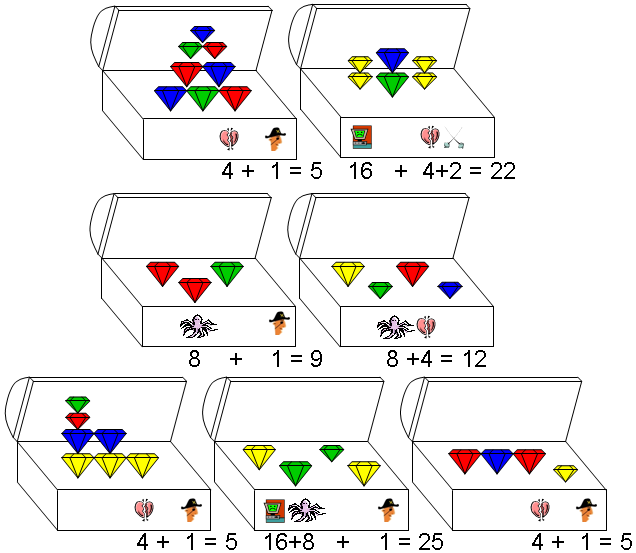There are many ways to figure out a rule, but here's the one we like best. Lay out the treasures that have that curse on your left side; lay out the others on your right side. Look for what one side has that the other side doesn't have. Also, look for a pair of treasures, one on each side, that are nearly the same—their differences may suggest what the rule is.
You should find the rules are as follows:
 |
A treasure has this curse if and only if it has no red gems. |
 |
A treasure has this curse if and only if it has no two touching gems. |
 |
A treasure has this curse if and only if it has gems of three or more colors. |
 |
A treasure has this curse if and only if it has vertical symmetry. |
 |
A treasure has this curse if and only if it has more large gems than small gems. |
Each curse's description contains a bold part that suggests a number, as follows.
 |
Computer hex refers to the hexadecimal system, whose base is 16. |
 |
An octopus has 8 legs. |
 |
Quadruple means multiplied by 4. |
 |
Dual means pertaining to 2 things. |
 |
One is obviously 1. |
For each unlabelled treasure, you can apply the rules above to figure out which curses it has. Then, by adding the numbers for all those curses, you can get a total for each treasure, as follows:

The resulting totals are 5, 22, 9, 12, 5, 25, 5. Converting each into a letter using the standard approach of indexing into the alphabet gives E, V, I, L, E, Y, E. Thus, the answer is EVIL EYE.